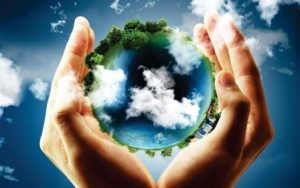The Consequences of Today, for Tomorrow’s World (Part II)
Feb 16th, 2017 | By admin | Category: Other ResourcesBy Candela Vázquez Asenjo, youth blogger, Transition Earth
(Read Part I here)
Global population growth today stands at approximately 7.4 billion people, due to hit nearly 10 billion in the next few decades.Though an increasing human population poses a threat to healthy and flourishing communities and ecosystems, especially in developing countries, it is a problem for the whole world. The impacts of colonization throughout history, and the ensuing destruction of ancient cultures that respected nature and limits, has created an interdependence – and pressure – between developing and developed countries.
It is in our human DNA to colonize and use natural resources until a point there are none left, and then move on to the next environment to exploit. The consequences of this behaviour have led to a belief in endless growth on a finite planet in order to continue this way of life.
The situation that the developing countries are in, from my point of view, is like the industrial revolution (in comparison with European history). They feel a need to have many children in order to have them work and bring more money to the family. At the same time, as developed nations had a period where they produced vast amounts of pollution, so now are developing nations experiencing high rates of pollution (see the recent news on how air pollution caused more than 4.2 million early deaths worldwide in 2015, making it the fifth highest cause of death, with around 2.2 million deaths in China and India alone.)
There are solutions to help us chart a new course. The first one is to reduce the amount of resources developed countries consume (and often waste). This will reduce pressure on and exploitation of developing countries’ natural resources and also human resources. Governments can then turn their focus to their own problems, and invest in programs that support women’s health, empower families, educate youth, create sustainable livelihoods that ultimately lead to a higher quality of life.
The second solution is to stabilize population without severely cutting the high amount of resources we need by investing in family planning and reproductive health services. The key is making it voluntary. China and India tried this, via control, and it set back efforts for years, as this approach threatens human rights, freedom and well-being. We want to slow down population growth but not cause suffering of people who have less power to change or go against the rules. Everyone must have the right to decide how to live without being afraid of the choices they make.
The third solution is to change the attitudes of people and help them think more critically and holistically. For example, choose local options when possible instead of the massive supermarkets and malls where so many of us go. Or follow the zero waste approach, whereby we live without so much dependence on wasting resources. By making the right decisions, we can live and have the resources to thrive on a planet where everyone is equal and have the same opportunities.
We must liberate ourselves from our old beliefs and start a new path. We are in a period of history where changes have to be made internally and externally, and rather quickly. Altering the current state of rapid population growth, inequality and poverty will require the participation of everyone.
As Martin Luther King Jr. said: “Every man must decide whether he will walk in the light of creative altruism or in the darkness of destructive selfishness.”
Candela Vázquez Asenjo is an Environmental Management student at the University of Manchester, UK, and a Law student at the Nebrija University, Spain. She aspires to be a social entrepreneur, with a focus on international environmental problems.

![[photo credit: Mahindra Rise]](http://populationgrowth.org/wp-content/uploads/2017/02/images.jpeg)
